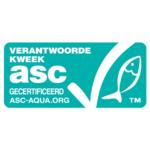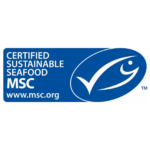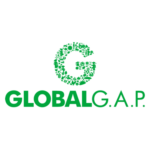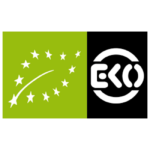Salmon, Chinook
Pacific Ocean, north-east (FAO 67)
Purse seines, Pots and traps, Handlines and pole-lines, Driftnets, Gillnets
- Jan
- Feb
- Mar
- Apr
- May
- Jun
- Jul
- Aug
- Sep
- Oct
- Nov
- Dec
There are many species that belong to the Salmonids or (Protacanthopterygii). Did you know trouts, smelts, and even pikes belong to the Salmon family? Salmonids occur in either salt and freshwater. Most species are well-specialized predators and live in temperate climate zones. Salmonids are ray-finned fishes and can be distinguished by the ‘fat-fin’ between the backfin and tail. They do not have spikes and the pelvic and pectoral fin are separated.
Salmonids are sold farmed and wildcaught. Wildcaught salmon comes from the Pacific. Almost all Atlantic salmon on sold is farmed. Since the 90s the farming of salmon increased dramatically. Norway, chile, Scotland, Canada and the Faroe islands are important farming countries for salmon. In both, wild-caught and farmed salmon problems in sustainability are prevalent.
The Chinook salmon, or king salmon, is one of the five salmon species that can be found in the northern Pacific Ocean and its adjoining rivers. The native distribution of the Chinook salmon ranges from Alaska to California in the east and from Siberia to Japan in the west. This species has also been introduced in other areas. This salmon can reach an average length of 70 cm and can weigh up to 30 kilograms. Salmon are so called anadromous fish. This means that they are born is freshwater and then migrate to sea to become mature. After a few years, the mature fish return to freshwater to reproduce. When the chinook salmon return to reproduce, their appearance changes; their colours change to olive-green, red and purple and the males develop elongated jaws. Salmon only reproduce once and die shortly after.
Pacific Ocean, north-east (FAO 67)
Purse seines, Pots and traps, Handlines and pole-lines, Driftnets, Gillnets
Pacific Ocean, north-east (FAO 67)
Purse seines, Handlines and pole lines (mechanised)
Pacific Ocean, north-east (FAO 67)
Gillnets
Pacific Ocean, north-east (FAO 67)
Purse seines, Hooks and lines
Pacific Ocean, north-east (FAO 67)
Deelgebieden: British Columbia
Purse seines, Hooks and lines, Gillnets
Pacific Ocean, north-west (FAO 61)
Fykes, Driftnets, Gillnets

Fish with the ASC label is farmed in a sustainable manner.

Fish with the MSC label is caught sustainably.
This fish is not being overfished or is being responsibly farmed, with minimal impact on the environment.
This fish is a second choice. There are still some improvements to be made in this fishery or fish farm.
Do not buy this fish. It's being overfished or the way it's farmed or caught has a negative impact on the environment.

There is fish available of this species that is farmed or caught using high welfare standards.

GlobalG.A.P. certified farms are doing a step in the right direction in terms of sustainability. A few species with this label are getting a better score on the VISwijzer.

Organic standards are the strictest when it comes to fish feed. They also require certain measures for animal well-being.